Dear Zazie, Here is today’s Lovers’ Chronicle from Mac Tag dedicated to his muse. Rhett
The Lovers’ Chronicle
Dear Muse,
that question has ruled
many days and nights
and if you have paid
attention, the or not
answer prevailed
until now
bein’ there was part
choice and part
circumstance
the latter changed
and the former took
awhile, as you know,
but i came around
and chose to be
here with you
© copyright 2022 mac tag all rights reserved
pre-you
that question
was too easy
to answer
decidedly or not
sure there were
some fleetin’ moments
where i thought maybe
but they were just that
a pause to tighten the cinch
and jump another fence
but now
to be here with you
startin’ to believe,
and feel a need
to change that answer
© copyright 2021 mac tag/cowboy coleridge all rights reserved
silence understood
and how all the same
in what we do
you know
similarities
with color
complete
the canvas
between the things
seen and said
cannot imagine
to be without
will not lose
another moment
think
of nothin’ else
become
more and more
us
© copyright 2019 mac tag/cowboy coleridge all rights reserved
to be or not to be
these are the thoughts
that seize my nights
and govern my days
my friends
i hear the chorus
and i ‘preciate
your concern
but i believe
solitude chooses
some of us
and it becomes
a first, best destiny
……
whoa, hold on playa
it is not that i do not
want your body
it is your mind
that i really want
that is where you keep
your beauty and sorrow
show me that
the rest will follow
or not
……
come, be my Lady Brett
we will sip absinthe
by the fire and talk
of our hopes
and dreams
……
come, enter this vision…
me, white dinner jacket tux
you in a killer black dress
we waltz the night away
© copyright 2018 mac tag/cowboy coleridge all rights reserved
© copyright 2017 mac tag/cowboy coleridge all rights reserved
it is not what she did
this mornin’
at first light
accounts for the smile
it is,
that she plans
to do it again
this evenin’
oh those eyes
ever
lettin’ on
but it is not
exactly
her eyes,
or her mouth
or even
her smile
it is all of her
and i want more
© copyright 2016 mac tag/cowboy Coleridge all rights reserved

Today is the birthday of Henri Fantin-Latour (Grenoble, Isère 14 January 1836 – 25 August 1904 Buré, Orne in Lower Normandy); painter and lithographer best known for his flower paintings and group portraits of Parisian artists and writers.
In 1875, Fantin-Latour married a fellow painter, Victoria Dubourg, after which he spent his summers on the country estate of his wife’s family at Buré, Orne in Lower Normandy, where he died. He was interred in the Cimetière du Montparnasse, Paris, France.
Gallery
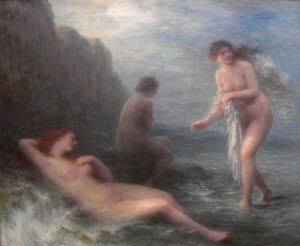
Le Soir, musée d’art et d’industrie de Roubaix.
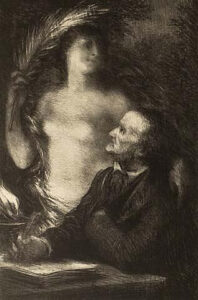
La Muse (Richard Wagner), 1862, lithographie
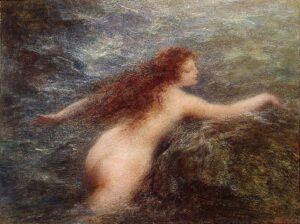
Naïade, musée de l’Ermitage, Saint-Pétersbourg
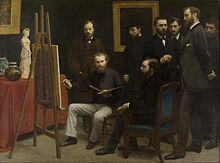
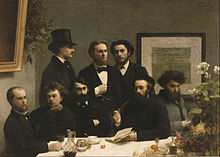





-

Portrait of Charlotte Dubourg, 1882, Paris, musée d’Orsay
-
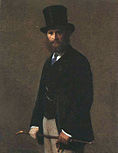
Édouard Manet, 1867, Art Institute of Chicago
-
Madame Lerolle 1882
-

Dawn
-

Roses
-

Danae
-

Venus and Cupido, (1867).
-

La Lecture, 1877, Musée des Beaux-Arts de Lyon
-

Still Life, primroses, pears and promenates, 1873
-
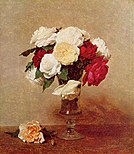
Vase of Roses 1875
-
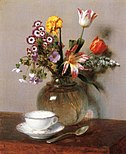
Still Life with Flowers and Fruit, 1865
| Berthe Morisot Madame Eugène Manet |
|
|---|---|

Berthe Morisot, 1875
|
|
Today is the birthday of Berthe Marie Pauline Morisot (Bourges, Cher; January 14, 1841 – March 2, 1895 Paris); painter and a member of the circle of painters in Paris who became known as the Impressionists. In 1864, she exhibited for the first time in the esteemed Salon de Paris. Sponsored by the government, and judged by Academicians, the Salon was the official, annual exhibition of the Académie des beaux-arts in Paris. Her work was selected for exhibition in six subsequent Salons until, in 1874, she joined the “rejected” Impressionists in the first of their own exhibitions, which included Paul Cézanne, Edgar Degas, Claude Monet, Camille Pissarro, Pierre-Auguste Renoir, and Alfred Sisley.
She was married to Eugène Manet, the brother of her friend and colleague Édouard Manet.
In 1868 Morisot became friends with Édouard Manet who painted several portraits of her, including a striking study in a black veil while in mourning for her father. Correspondence between them shows affection, and Manet gave her an easel as a Christmas present.
Morisot drew Manet into the circle of painters who became known as the Impressionists. In 1874, she married Manet’s brother, Eugène.
Morisot died of pneumonia contracted while attending to her daughter Julie’s similar illness, and thus orphaning her at the age of 16. She was interred in the Cimetière de Passy.
Gallery
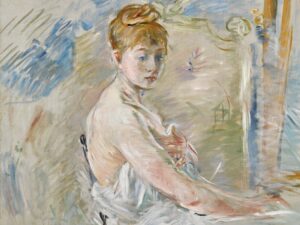
Jeune Femme se levant. 1886
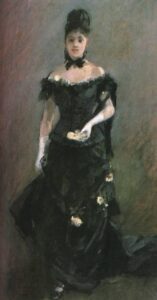
Avant le théâtre, 1875-76
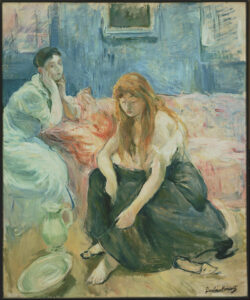
Deux jeunes filles 1894


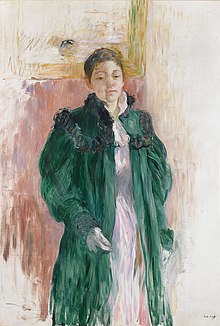


-

The Harbor at Lorient, 1869, National Gallery of Art
-

Reading, 1873, Cleveland Museum of Art
-

Hanging the Laundry out to Dry, 1875, National Gallery of Art
-
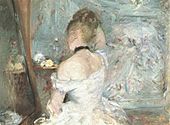
Lady at her Toilette, 1875 The Art Institute of Chicago
-

Eugène Manet on the Isle of Wight, 1875, Musée Marmottan Monet
-

The Dining Room, c. 1875 National Gallery of Art
-

Summer’s Day, 1879, National Gallery, London
-

Winter aka Woman with a Muff, 1880, Dallas Museum of Arts
-

The Bath (Girl Arranging Her Hair), 1885–86, Clark Art Institute
-
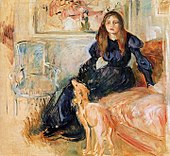
Julie Manet et son Lévrier Laerte, 1893, Musée Marmottan Monet
Portraits of Berthe Morisot
-

Detail from The balcony by Édouard Manet, with the portrait of Berthe in the foreground. 1868.
-
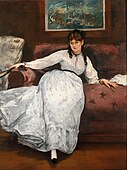
Berthe Morisot posing for The Rest. 1870. By Édouard Manet.
-

Berthe Morisot on a divan couch, 1872, by Édouard Manet.
-
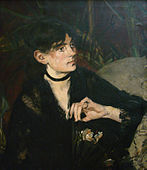
Portrait of Berthe Morisot with a Fan, 1874 by Édouard Manet.
-
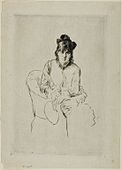
Portrait of Berthe Morisot, 1876, by Marcellin Desboutin.
-

Portrait of Berthe Morisot. 1882. By Édouard Manet.
-
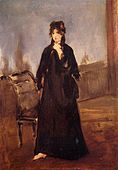
Berthe Morisot au soulier rose. 1872. By Édouard Manet. Hiroshima Museum of Art.
-
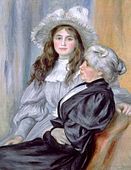
Berthe Morisot and her daughter Julie Manet, 1894, by Pierre-Auguste Renoir.
-
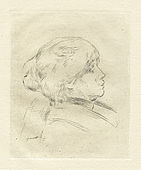
Berthe Morisot, 1892, by Renoir.
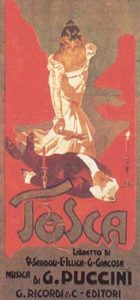 And on this day in 1900, the premiere of Tosca, an opera in three acts by Giacomo Puccini to an Italian libretto by Luigi Illica and Giuseppe Giacosa. It premiered at the Teatro Costanzi in Rome. The work, based on Victorien Sardou’s 1887 French-language dramatic play, La Tosca, is a melodramatic piece set in Rome in June 1800, with the Kingdom of Naples’s control of Rome threatened by Napoleon’s invasion of Italy. It contains depictions of torture, murder, and suicide, as well as some of Puccini’s best-known lyrical arias.
And on this day in 1900, the premiere of Tosca, an opera in three acts by Giacomo Puccini to an Italian libretto by Luigi Illica and Giuseppe Giacosa. It premiered at the Teatro Costanzi in Rome. The work, based on Victorien Sardou’s 1887 French-language dramatic play, La Tosca, is a melodramatic piece set in Rome in June 1800, with the Kingdom of Naples’s control of Rome threatened by Napoleon’s invasion of Italy. It contains depictions of torture, murder, and suicide, as well as some of Puccini’s best-known lyrical arias.
Puccini saw Sardou’s play when it was touring Italy in 1889 and, after some vacillation, obtained the rights to turn the work into an opera in 1895. Turning the wordy French play into a succinct Italian opera took four years, during which the composer repeatedly argued with his librettists and publisher. Tosca premiered at a time of unrest in Rome, and its first performance was delayed for a day for fear of disturbances. Despite indifferent reviews from the critics, the opera was an immediate success with the public.
Musically, Tosca is structured as a through-composed work, with arias, recitative, choruses and other elements musically woven into a seamless whole. Puccini used Wagnerian leitmotifs to identify characters, objects and ideas. While critics have often dismissed the opera as a facile melodrama with confusions of plot—musicologist Joseph Kerman famously called it a “shabby little shocker”—the power of its score and the inventiveness of its orchestration have been widely acknowledged. The dramatic force of Tosca and its characters continues to fascinate both performers and audiences, and the work remains one of the most frequently performed operas. Many recordings of the work have been issued, both of studio and live performances.
Mac Tag



No Comments on "The Lovers’ Chronicle 14 January – to be – art by Henri Fantin-Latour & Berthe Morisot – premiere of Puccini’s Tosca"